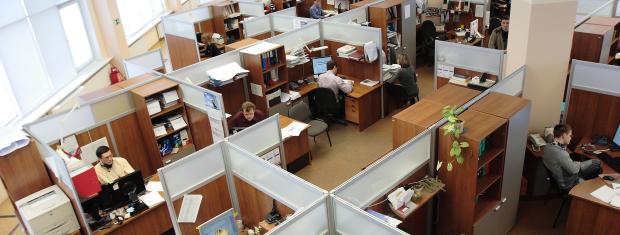
Do You Know the 5 Types of Workplace Hazards?
4.2 million nonfatal workplace injuries and illnesses were reported by private industry employers in 2024 – 750 worker deaths were also reported. While the majority of workplace fatalities occur in the construction industry, there are hazards present within every workplace that must be recognized.
Whether it be an office, a restaurant, a work site, a machine shop, or a school – no matter the type of business, there will be hazards. If you are a business owner or an employee, it’s important to learn how to identify hazards to keep you, your coworkers and/or your customers safe:
Understanding Different Types of Hazards
Every workplace should be inspected regularly for possible hazards if processes and workstations change, maintenance is neglected, or housekeeping practices decline. Tools and equipment should also be inspected regularly. Performing quarterly inspections for workplace hazards can help to prevent and/or decrease workplace injuries.
OSHA’s Hazard Identification Training tool is a great place to start for those interested in learning the core concepts of hazard identification. Start by inspecting your workplace for any identifiable hazards. There are five types of hazards to look for: safety, physical, ergonomic, chemical and environmental.
Safety Hazards

Safety hazards are those that create unsafe working conditions that can cause injury, illness or death. These are the most common types of workplace hazards and they typically include:
- Anything that can cause spills or trips such as cords running across the floor or ice
- Anything that can cause falls such as working from heights, including ladders, scaffolds, roofs, or any raised work area
- Unguarded machinery and moving machinery parts that a worker can accidentally touch
- Electrical hazards like frayed cords, missing ground pins, improper wiring
- Confined spaces
Physical Hazards
Physical hazards can be any factors within the environment that can harm the body without necessarily touching it. Some examples include:
- Radiation: including ionizing, non-ionizing (EMF’s, microwaves, radio waves, etc.)
- High exposure to sunlight/ultraviolet rays
- Temperature extremes – hot and cold
- Constant loud noise
Ergonomic Hazards
Ergonomic hazards are created when the type of work, working conditions and body positions put a strain on your body. These hazards can be difficult to identify because they aren’t always recognizable immediately and can affect every employee differently.
Short-term exposure may result in “sore muscles” the next day or in the days following the exposure, but long-term exposure can result in serious long-term illness. Some of these hazards include:
- Improperly adjusted workstations and chairs
- Frequent lifting
- Poor posture
- Awkward movements, especially if they are repetitive
- Having to use too much force, especially if you have to do it frequently
- Vibration
Chemical Hazards

Some chemicals can result in illness, skin irritation, or breathing problems when a worker is exposed to it (solid, liquid or gas). Some things to consider when assessing these hazards include:
- Liquids like cleaning products, paints, acids, solvents – ESPECIALLY if chemicals are in an unlabeled container!
- Vapors and fumes that come from welding or exposure to solvents
- Gases like acetylene, propane, carbon monoxide and helium
- Flammable materials like gasoline, solvents, and explosive chemicals
- Pesticides
Biological Hazards
Biological hazards include exposure to harm or disease associated with working with animals, people, or infectious plant materials. Some examples include:
- Blood and other body fluids
- Fungi/mold
- Bacteria and viruses
- Plants
- Insect Bites
- Animal and bird droppings
After you have done your walkthrough, do not hesitate to ask your employees if they have noticed any additional hazards that may not be immediately obvious to you. After all, they are the ones who would be exposed to various risks.
(*updated 08/11/2025)


